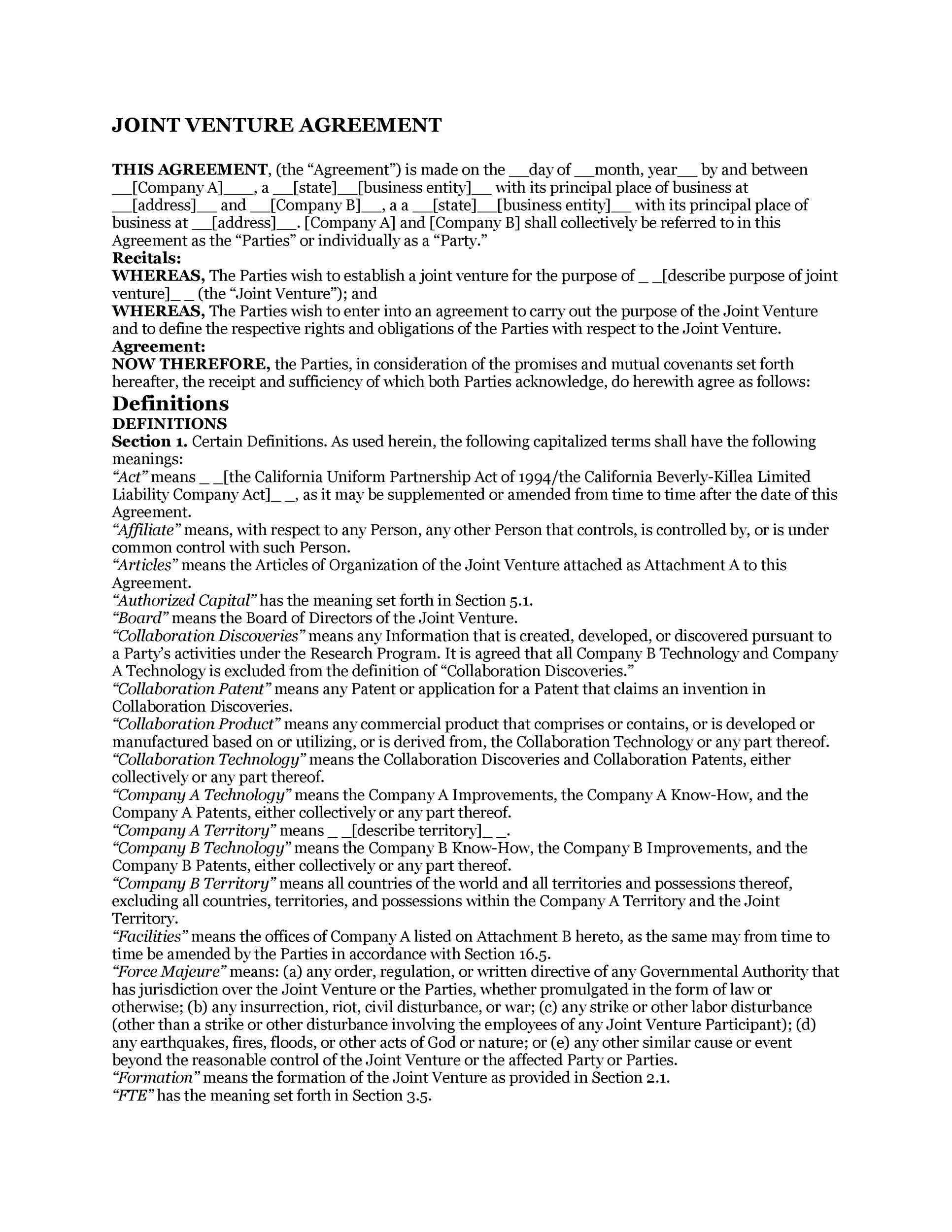
Key Features of a Joint Venture AgreementĪ joint venture agreement should include the names and contact information of all parties involved, the purpose of the venture, the roles and responsibilities of each party, the duration of the agreement, and the terms of the agreement. The agreement should also outline what happens in the event of a breach, insolvency of one party, or an irreconcilable dispute. Most agreements allow for termination with 30 days’ notice. Terminating a Joint VentureĪ joint venture agreement might allow for termination once the common goal has been achieved, once a certain date has been reached, or once the parties agree jointly to terminate.Ī joint venture agreement should spell out what happens in the event one party or both parties wish to terminate the venture. The parties involved will be legally obligated to meet the terms of the agreement until the agreement is terminated. The signing of an agreement establishes a joint venture. Source: City University of New York Law Review Step 4 – Begin the Joint Venture Single objective – Is the objective limited to a specific timeframe or activity?.Profit rights – How will the parties share in any profits generated?.Profit – Is there an expectation of profits?.Mutual control – Will the parties mutually control or manage the enterprise?.Joint interest – What is/are the parties’ joint interest(s)?.

SAMPLE OF JOINT VENTURE AGREEMENT HOW TO
How to Form a Joint Venture (4 Steps)įirst, identify whether the organization under consideration would be a good match. The joint venture expands each airline’s customer base. Previously, a traveler would have to book Qantas to get to the United States and then another airline to get to their final destination. This means a traveler looking to book a trip from Sydney to New York can do so on either airline’s website. Since 2019, American Airlines and Qantas allows travelers to book trips using each other’s networks. Coca-Cola provided signage and other incentives as part of this venture. Since 1955, Coca-Cola has provided soft drinks to McDonald’s to accompany their meals. Mercedes-Benz provides the chassis and engineering while Airstream constructs the rest of the vehicle. Since 2004, both companies have built RVs together. Joint pursuit of a business goal or projectĪgreement between company owners united by a broad purposeįlows to the company based on ownership percentage The main difference relates to breadth whereas a joint venture is generally contracted in order to enable two separate entities to jointly achieve a specific, fixed-term goal, a limited-liability partnership allows parties to jointly own and operate a company until such time as the company is dissolved. While a joint venture appears similar to a partnership, the two legal entities are in fact distinct and separate. Sharing of risk and startup costs, including marketing and operating costs.The central question to ask before forming a joint venture is this: will sharing capacity and/or resources help us to achieve something we couldn’t achieve individually and separately? Will this arrangement be mutually beneficial? Consider the possibility of such benefits as: An alliance could, for example, enable two companies that specialize in two different fields to access or dominate a new market.Īnother reason two companies might form a joint venture is to increase their likelihood of winning a tender or bid for a contract. Sometimes, the reason for forming a joint venture is more related to strategy than capital. By joining together, they could share the burden of startup costs, gain access to the technology, then share in any profits generated as a result.

Two companies might, for example, acknowledge that individually they lack the resources to access a particular technology that would enable a business venture to succeed. Often, the reason two parties decide to enter into a joint venture is to complete a specific project.


 0 kommentar(er)
0 kommentar(er)
